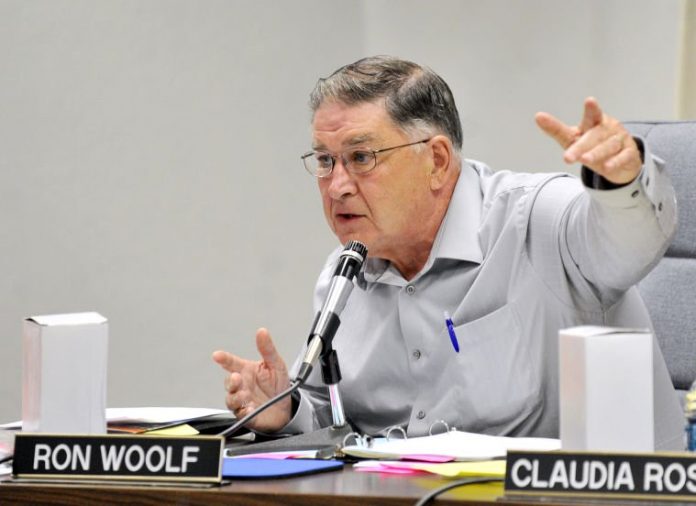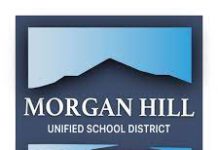Despite no specifics as to what the increased revenues would be used for other than to improve local public education, Morgan Hill Unified’s board of education approved a $24,000 expenditure to poll the taxpayers on their likely level of support for a parcel tax. If the results are favorable, a ballot measure asking property owners for more money could go to the voters in an upcoming election.
In a 6-1 vote, the governing body hired Gene Bregman & Associates “to conduct a survey to evaluate the opinions of voters in Morgan Hill Unified School District regarding a possible parcel tax measure for 2018 and related issues.”
According to the contract, the surveyors will complete 400 interviews with likely voters to gain “an accurate reading of the population as a whole” on their level of support for a local parcel tax to support the school district.
“There’s a lot of unknowns related to this and part of the process is to turn these unknowns into knowns as best we can,” said Superintendent Steve Betando, whose district staff urged the board to vote in favor of the expenditure.
The marketing firm, with input from the district, plans to develop survey questions to help gauge the voting public’s threshold for how much of a tax rate they’d be willing to support and for how long. The survey is expected to be completed in May with results to be presented at the June board meeting with a target of a June 2018 ballot measure if the support is there.
Trustee Gino Borgioli, who cast the lone dissenting vote, said the money could be better spent elsewhere since he didn’t believe any type of local parcel tax would be supported by the community. He also felt that 400 households would not be an accurate reading since it was only one-hundredth of one percent of the MHUSD voter population of about 34,500.
“I just don’t think we have the appetite for another tax in this community,” said Borgioli, also noting that the district is still in the process of putting to use the funds from the $198 million Measure G capital improvements bond passed by voters in November 2012. “I just don’t think this is a good use of our money.”
The district previously sought approval for a parcel tax in June 2006, which was called Measure E, but it was unsuccessful with only 55.5 percent of the votes cast. A parcel tax requires a two-thirds majority approval.
Betando explained that other school districts have different forms of parcel taxes in place—some short term or long-term and others permanent—and thus have an advantage over Morgan Hill as far as funding supply. District staff pointed out that MHUSD is “the lowest funded unified school district in Santa Clara County.” MHUSD had $84,035,135 in revenues on its operating budget for the 2016-17 school year.
Gauging public interest
With more than 30 years of experience in surveys on legislative and ballot issues, Gene Bregman & Associates boasts that “since 2008, 58 of our 60 clients with ballot measure intended to raise revenue, whether through parcel taxes, bonds, sales taxes or transient occupancy taxes, have won approval from their voters.” Those included area school districts such as Gilroy Unified, East Side Union and Los Gatos-Saratoga Joint Union.
From 2003 through 2016, 385 of 656 parcel tax elections were approved while 395 were defeated, according to ballotpedia.org. In 2017, Menlo Park City School District passed Measure X “to protect outstanding public schools; retain high-quality teachers, excellent programs, and reasonable class size; avoid teacher layoffs; and sustain property values.”
In 2015, voters in the Campbell Union School District approved Measure B, a parcel tax that “provides stable, local funding to protect and improve academic programs and retain qualified teachers.”
“I think we have a huge opportunity here,” said Trustee David Gerard of the parcel tax possibilities. “My only concern is quite frankly the timeline. I’m not sure why we have to jump so quickly into this. There’s no description as to why we want to do this and what it’s for.”
Trustee Ron Woolf, however, offered an opposing view in full support of the district’s timeline. Woolf worked on the committee that helped generate the support and eventual approval for Measure G.
“Other districts have parcel taxes and they pass quite handily. I think we really have to move on this,” Woolf said. “We don’t have too many alternatives. I would like to hear what the people have to say overall whether that’s 1 percent or less than 1 percent.”
Trustee Mary Patterson asked directly “what do we want out of this?” Although there was no immediate and specific answer to that, Betando explained staff will evaluate the district’s needs once the contract is approved, discuss that with the marketing firm and those needs will be weaved into the series of questions given in the survey.
“It’s about finding that balance between need versus public interest versus an amount tolerable for people to tax themselves to support our students for years to come,” Betando said.
A parcel tax is a form of property tax assessed at a rate based on the characteristics of a “parcel,” rather than on the assessed value of the property, which is the standard method for levying property taxes, according to ballotpedia.org. It can be used for any type of spending, including construction costs, employee salaries and other projects or needs.
56.1
F
Morgan Hill
July 27, 2024







